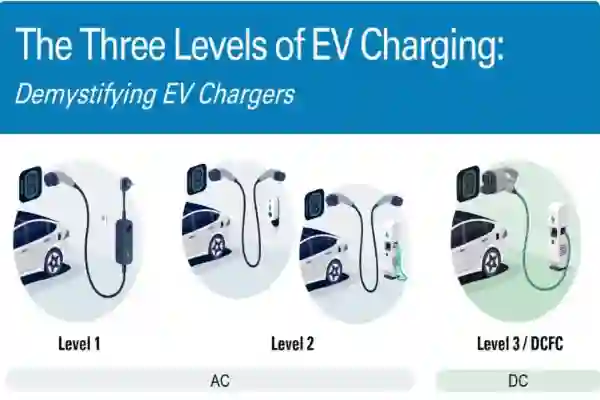EV Charging Load Management: An Essential Component of Modern EV Infrastructure
As the adoption of electric vehicles (EVs) continues to surge worldwide, the demand for efficient and reliable charging infrastructure has become increasingly critical. A vital aspect of this infrastructure is EV charging load management, a system designed to optimize power distribution across charging stations, ensuring grid stability, cost efficiency, and a seamless charging experience for users. This article delves into the concept, types, benefits, and significance of EV charging load management in supporting the growing EV ecosystem.

What is EV Charging Load Management?
EV charging load management involves the strategic control and distribution of electrical power among various charging stations. This process prevents grid overloads, optimizes energy usage, and maintains system efficiency. EVs require significant amounts of electricity for charging, and unmanaged charging can strain the power grid, leading to instability, higher costs, and potential outages. Load management systems address these challenges by intelligently allocating power based on factors such as demand, grid capacity, and user priorities.
Types of EV Charging Load Management
Static Load Management
Static load management is a straightforward approach where power is distributed among chargers based on predetermined limits. For example, if a charging station has a total power capacity of 100 kW and four chargers, each charger might be allocated 25 kW of power. This method is easy to implement and works well in smaller installations with consistent power demands. However, it lacks flexibility as it does not account for real-time changes in demand or grid conditions, leading to potential inefficiencies.
Dynamic Load Management
Dynamic load management is a more advanced and flexible approach. It continuously monitors power consumption and adjusts the distribution of electricity in real-time based on current demand and grid conditions. Using sophisticated algorithms, dynamic load management systems can optimize energy use by prioritizing chargers with higher demand or redistributing power when certain chargers are idle. This approach is particularly beneficial for larger installations with variable power demands, such as public charging stations or workplaces with fluctuating EV usage.
Advantages of Efficient Load Management
Grid Stability
One of the most significant benefits of load management is its ability to maintain grid stability. By balancing the load across multiple chargers, load management systems prevent overloading the grid, reducing the risk of blackouts or brownouts. This is crucial as the number of EVs on the road continues to grow.
Cost Savings
Load management can lead to substantial cost savings for charging station operators. By minimizing peak demand charges and optimizing energy use, operators can reduce their electricity bills. Additionally, efficient load management can lower the need for costly grid upgrades, as it maximizes the use of existing infrastructure.
Extended Equipment Life
Overloading electrical components can lead to overheating and premature wear and tear. Load management systems prevent this by ensuring that chargers operate within their designed capacity, thereby extending their lifespan and reducing maintenance costs.
Enhanced User Experience
For EV owners, load management ensures that charging stations remain available and operational, even during periods of high demand. This improves the reliability and convenience of EV charging, making it easier for users to keep their vehicles powered up.
Sustainability
Load management supports the integration of renewable energy sources, such as solar or wind power, into the charging infrastructure. By optimizing energy use and reducing reliance on fossil fuels during peak periods, load management contributes to more sustainable energy practices.
How Does EV Charging Load Management Work?
EV charging load management systems are sophisticated solutions designed to efficiently distribute electrical power across multiple charging stations while ensuring optimal performance and preventing grid overload. These systems rely on a seamless integration of hardware and software components to monitor, communicate, and control power distribution in real-time.
Monitoring: Real-Time Data Collection
The foundation of any effective load management system is its ability to monitor power consumption accurately and in real-time. This is achieved through the use of specialized hardware, such as sensors, meters, and monitoring devices, which are installed at various points within the charging infrastructure. These devices continuously track key metrics, including the amount of electricity being consumed by each charger, the total load on the electrical system, and voltage, current, and other electrical parameters to ensure safe and efficient operation.
Communication: Data Transmission and Coordination
Once the monitoring devices collect data, it needs to be transmitted to a central management system for analysis and decision-making. Modern EV charging systems use established protocols like OCPP (Open Charge Point Protocol), which enables seamless communication between the charging stations and the central management platform. This two-way communication ensures that the system can respond dynamically to changes in demand or grid conditions, making it highly adaptable and efficient.
Control: Adjusting Power Distribution
With the data collected and communicated, the load management system adjusts power distribution. In static load management, power distribution is controlled based on predetermined limits. In contrast, dynamic load management uses real-time data and sophisticated algorithms to make nuanced adjustments to power distribution, optimizing energy usage and ensuring that the system operates efficiently, even during periods of high demand.
Optimization: Predictive Algorithms and Future Planning
The most advanced EV charging load management systems incorporate predictive algorithms to optimize power distribution. These algorithms analyze historical data, usage patterns, and other factors to forecast future demand. By leveraging predictive analytics, these systems can not only respond to current conditions but also plan ahead to ensure optimal performance and energy efficiency.
Why Should EV Charging Providers Care About EV Charging Load Balancing?
EV charging load balancing is essential for optimizing site efficiency and enhancing customer satisfaction. It ensures that each vehicle receives the right amount of energy, meets customer expectations, and minimizes energy costs. Proper load balancing helps prevent overloading and power shortages, ensuring that all vehicles are charged on time, even during peak usage. It also guarantees that charging stations are available when needed, providing reliable service. Smart load management not only allows for efficient use of available power but also notifies drivers if their vehicle won't be fully charged in time, helping them plan accordingly.
Conclusion
EV charging load management is a critical component of modern EV infrastructure. By effectively managing electrical power distribution, load management systems ensure grid stability, reduce operational costs, and enhance the efficiency and reliability of EV charging. As electric vehicle adoption continues to increase, the implementation of advanced load management solutions will be essential for supporting sustainable energy use and advancing smart mobility.

